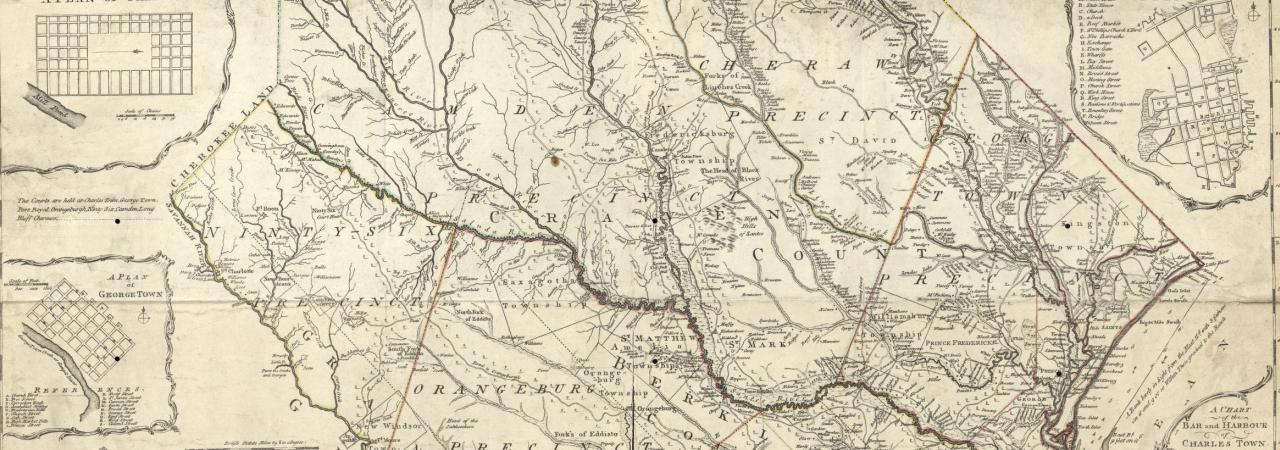James Island, SC | Nov 14, 1782
In the closing weeks of 1782, the British forces occupying Charleston were preparing to evacuate the city. In the meantime, foraging parties were sent beyond the city’s defenses to gather needed supplies, including firewood. Seeing an opportunity to harass these detachments, Colonel Tadeusz Kosciuszko, the Polish volunteer military engineer, and one of Major General Nathanael Greene’s most prominent officers, held command of a nearby American detachment of light calvary. American Captain William Wilmot of the 2nd Maryland Continental line reconnoitered James Island on October 23. He discovered that 50 to 100 British sailors arrived the same time every morning at Dill’s Bluff to cut firewood on the south side of James Island Creek. Spying the British routine, Kosciuszko moved onto James Island that night and laid in ambush until late the next morning. The woodcutters failed to appear because the British had learned of the attempted ambush. Altering their schedule, the British changed their escort from 20 men to a combined force of infantry and cavalry from the command of Major William Dancey at Fort Johnson. Three weeks later Kosciuszko decided to make a second attempt on the woodcutters, after his successful raid on James Island to capture horses.
Kosciuszko’s 70-man force consisted of Wilmot’s Marylanders and of Lieutenant John Markland’s 1st Pennsylvanian Continentals. Wilmot borrowed clothes from his friend, John Gibbes. “I have not my baggage at hand, you must loan me a shift of clothes. If I fall, which is not unlikely, it would be a satisfaction to me that the enemy should find me in clean linens.” On the morning of November 14, Kosciuszko’s men engaged the woodcutters’ escort detachment, only to find the British better prepared for the American attack than they had anticipated. British reinforcements were quickly brought to the action such that Kosciuszko now faced over 300 men and a canon, substantially outnumbered five to one. The brief, intensely hot fight wounded Markland and four others, and killed Wilmot and four more. Overwhelmed, Kosciuszko withdrew. One of those casualties was a slave, William Smith, who was wounded in the shoulder, taken prisoner by the British where he later died. Four musket balls pierced Kosciuszko’s coat and a musket ball shattered a spontoon in his hand, but he was unharmed. He narrowly escaped being cut down by a British dragoon, who was killed by William Fuller. Kosciuszko deftly retreated along the creek and across James Island to reach Johns Island.
Captain Wilmot is recognized by many historians to be the last Continental soldier killed in the Carolinas during the American Revolution. Markland wrote in his memoirs that this was the last battle in the War of Independence. Depending on the definition of what is a battle this may or may not be true, but the Battle of Dills Bluff was the last combat action of the Continental Army in South Carolina. There would be further maneuvers at Goose Creek and at Charleston. On December 14, 1782, Major General Alexander Leslie’s British army left their forward works and evacuated Charleston while Brigadier General Anthony Wayne’s Continentals moved in. “This fourteenth day of December, 1782, ought never be forgotten by the Carolinians; it ought to be a day of festivity with them, as it was the real day of their deliverance and independence,” recorded General William Moultrie. Today, the site of the skirmish at Dills Bluff has been commemorated by a historical marker located off North Shore Drive on James Island. Though a small engagement by all means, it represents the last time American patriots of South Carolina bore arms against the British army in the fight for American independence.
All battles of the Southern Theater 1780 - 1783 Campaign
Related Battles
70
300
10
5

